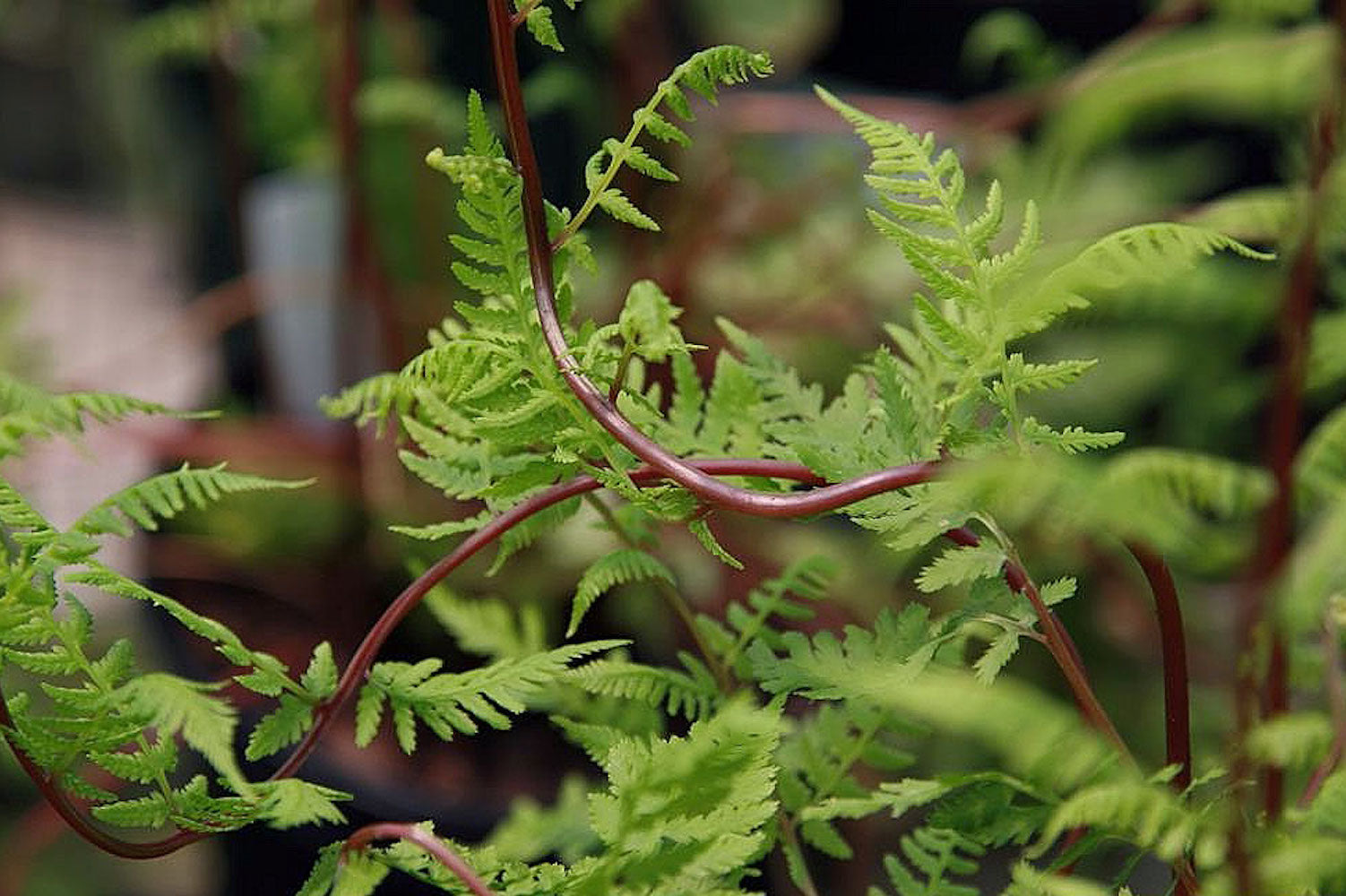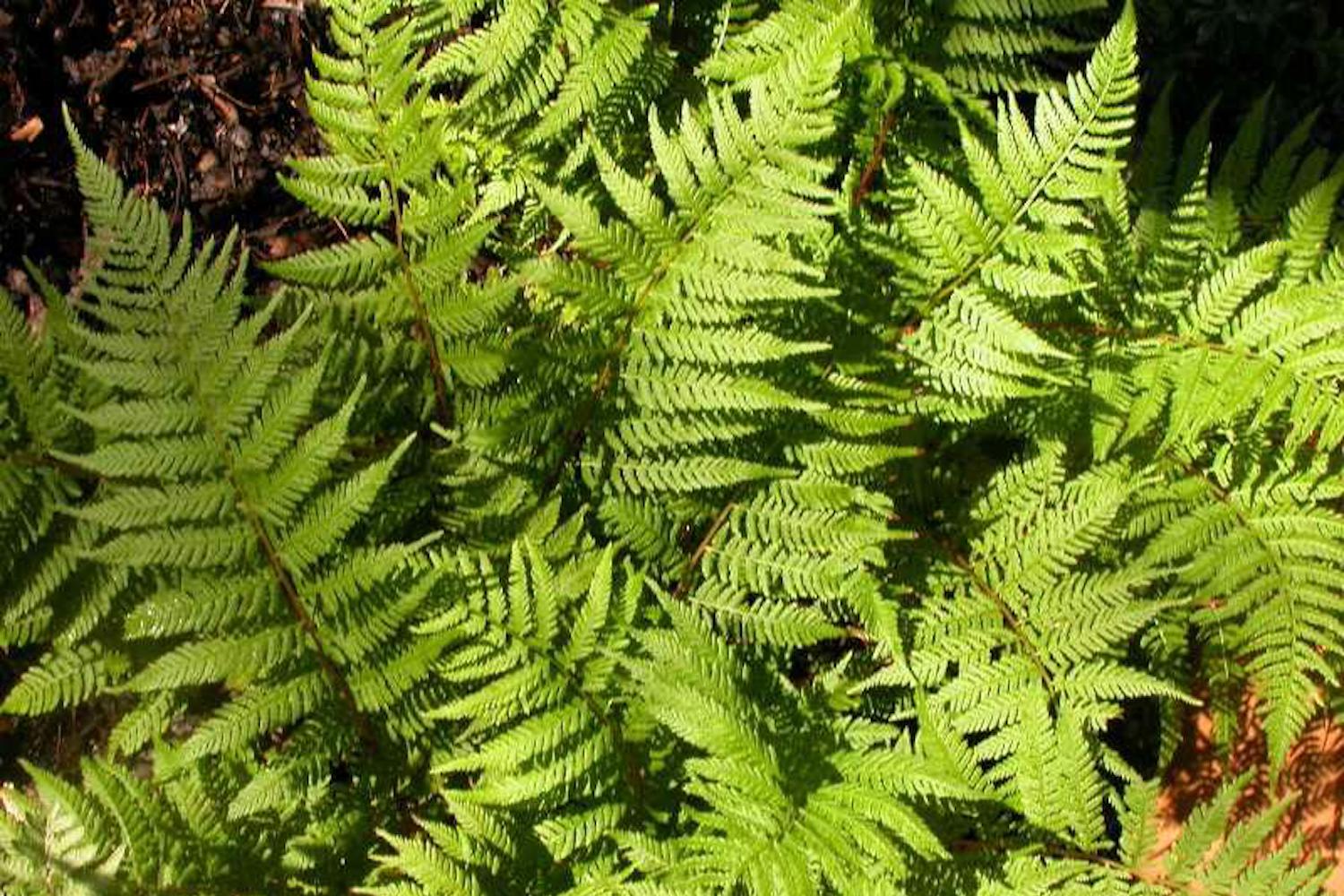Athyrium filix-femina subsp. angustum f. rubellum 'Lady in Red'
Approx. 0.5 litre pot
About this cultivar:
Athyrium filix-femina subsp. angustum f. rubellum 'Lady in Red' has never looked so lovely as it did tonight, never seen a fern shine so bright. It is a cultivar that typically grows slightly smaller than the species and features elliptic lacy light green fronds with contrasting burgundy-red stipes (stems). Apparently introduced by a John Lynch via The New England Wildflower Society in the year 2000.
Subsp. angustum, commonly called northern lady fern, is native from Greenland to Newfoundland and Saskatchewan south to South Dakota, Missouri and North Carolina. Subsp. angustum primarily differs from the species by (a) yellow spores, (b) erect to ascending rhizomes, (c) elliptic pinnae with widest part of the frond near the middle, and (d) stipes (stems) are about the same length as the blades.
The species, Athyrium filix-femina, is a large, feathery species of fern native throughout most of the temperate Northern Hemisphere, where it is often abundant in damp, shady, woodland environments.
Its common name 'lady fern' could refer to how its reproductive structures (sori) are concealed in an inconspicuous – deemed 'female' – manner on the frond. Alternatively, it is said to be feminine because of its elegant and graceful appearance. ALTERNATIVELY AGAIN the fronds are narrow at the top and bottom (this feature makes them easily identified) but wide at the centre, presumably like like a lady's hips.
Specific epithet comes from Latin filix meaning fern and femina meaning woman as confirmed by the common name of lady fern.
They often change their minds and decide to vary in size (a lady's fern is a lady's prerogative? - another alternative naming theory?) but usually stay under 1.5 ft tall (45cm).
A great choice for a shady area of the garden in need of a small-to-medium but easy-to-grow fern. Rock gardens, woodland gardens, shaded border fronts or shade gardens. Also effective in shaded areas along streams or ponds.
- Position: Partial shade, Full shade
- Soil: Almost any soil - grows well in Ballyrobert!
- Flowers: Non-flowering, but interest January, February, March, April, May, June, July, August, September, October, November, December
- Other features: Royal Horticultural Society Award of Garden Merit (RHS AGM), Suitable for Container, Woodland Plant, Interesting Foliage or Fruit
- Hardiness: H6 - Hardy in all of UK and northern Europe (-20 to -15°C), Fully hardy - grows well in Ballyrobert!
- Habit: Clump forming, Bushy
- Foliage: Deciduous
- Height: 30 - 75 cm (1 - 2.5 ft)
- Spread: 30 - 75 cm (1 - 2.5 ft)
- Time to full growth: 2 to 5 years
- Plant type: Herbaceous Perennial, Fern
- Colour: Green
- Goes well with: -
About this genus:
Athyrium (often name after the species type, Lady ferns) have long been valued (case in point: the Victorian fern craze) for being an easy-to-grow and spectacular looking genus of, tough, deciduous, garden ferns. Although the Japanese painted fern, Athyrium niponicum, was only used in the garden relatively recently it is now the most popular species.
The sheer volume of named cultivars of Athyrium for sale is incredible. Despite the popularity of the genus Athyrium most gardeners have never grown more than a fraction of the 80-plus species
As mentioned, Athyrium niponicum is also extremely popular and was selected as the 2004 Perennial Plant of the Year. Many wonderful cultivars are around because of the diversity of the foliage colour.
As you can imagine by their popularity, most members of the genus Athyrium are quite easy to grow in a wide variety of garden conditions. Despite a reputation as shade-only plants many Athyrium will do well in sun as long as there is enough moisture to stop them drying out (think: they are often grown and displayed in hot, humid, sunny, glass houses aren't they!!!?)








